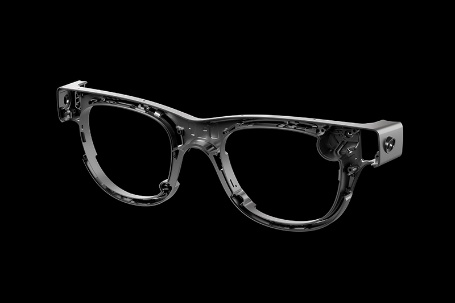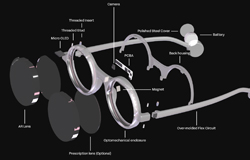In the hustle and bustle of modern life, where technology seamlessly weaves into every aspect of our daily routines, augmented reality (AR) eyewear emerges as a revolutionary force, blurring the lines between the digital and physical worlds. Yet, like a finely tuned instrument, the true potential of AR glasses lies not only in their software wizardry but also in the robustness and innovation of their hardware—specifically, the frames that cradle this cutting - edge technology.
Traditional frame materials have long struggled to keep pace with the exacting demands of AR. Picture this: You're at a tech - heavy conference, donning a pair of plastic - framed AR glasses. As the day wears on and the device heats up from continuous use, the plastic frame starts to warp, throwing off the precision of the optical components. Or perhaps you opt for aluminum - framed AR glasses, hoping for durability. But after hours of wear, the added weight feels like a constant reminder of compromise, turning what should be an immersive experience into a tiresome ordeal. These conventional materials, once adequate for simpler applications, now seem like relics in the face of AR's rapid evolution.
Why magnesium alloy materials will become the trend of AR glasses frames?
Enter magnesium alloy—a game - changer in the world of AR eyewear. In a society that values both form and function, magnesium alloy frames strike the perfect balance. With a strength - to - weight ratio that makes them approximately 30% lighter than aluminum at comparable strength, they offer a liberating experience. Whether you're using AR glasses for an intense gaming session, a long - day of remote work with virtual overlays, or exploring a virtual art exhibition, the lightweight nature of magnesium alloy frames ensures that comfort remains uncompromised.
But the benefits extend far beyond mere lightness. In the United States and Europe, where tech enthusiasts demand top - notch performance, magnesium's superior thermal conductivity becomes a crucial asset. It acts as a silent sentinel, efficiently dissipating heat generated by the integrated electronics. This not only prevents performance throttling but also significantly extends the lifespan of the components, ensuring that your AR investment stands the test of time. Additionally, the material's natural vibration - damping properties add an extra layer of comfort, making extended use a breeze.
When it comes to realizing the full potential of magnesium alloy in AR eyewear, Jarkel stands in a league of its own. In a market saturated with suppliers, Jarkel differentiates itself as a true partner, not just a vendor. Rooted in the Western ethos of innovation and quality, the company has poured years of research into developing proprietary processes tailored specifically for AR applications.

From state - of - the - art surface treatments that enhance durability, ensuring the frames can withstand the rigors of daily use and adventure, to precision engineering that guarantees perfect optical alignment, every Jarkel frame is a testament to meticulous craftsmanship. And in a culture that prizes individuality, Jarkel offers complete customization capabilities. Whether it's a unique color scheme, a personalized fit, or specialized features, partners can create AR eyewear that not only meets the highest standards of performance but also stands out in a crowded marketplace.
As the AR industry continues to expand at an unprecedented pace, embracing magnesium alloy frames is no longer just an option—it's a strategic imperative. Early adopters will find themselves not only ahead of the curve but also positioned to redefine user expectations. Jarkel is poised to be the ideal partner in this journey, offering reliable, high - quality frame solutions that are as forward - thinking as the AR technology they support.
The future of AR eyewear is here, and it's framed in magnesium alloy. It's a future where technology seamlessly integrates with our lives, offering comfort, performance, and style in equal measure. Partner with Jarkel, and together, let's shape the next chapter of AR innovation.






 Home
Home admin
admin  May 13,2025
May 13,2025 
 Why is Jarkel Your Preferred Partner for Magnesium Alloy AR Glasses Frames?
Why is Jarkel Your Preferred Partner for Magnesium Alloy AR Glasses Frames? 











